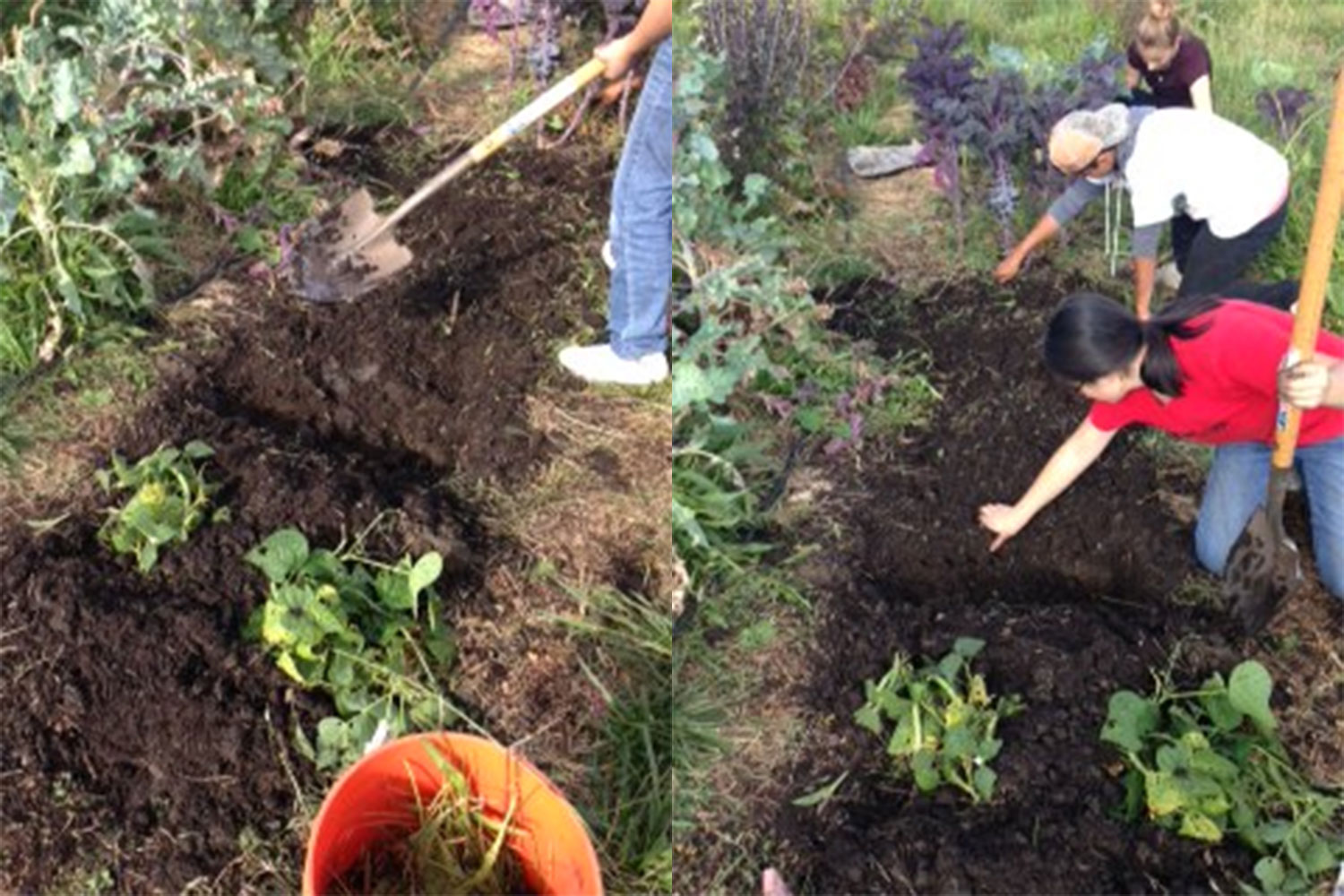The past week or so, in Redwood High Schools Sustainable Agriculture class, has been all about preparing our planting beds for this year. So far, the main part of this process has been double digging the soil in the beds. Double digging is a gardening technique whose purpose is to boost aeration in the planting soil. By increasing aeration, you are allowing water to drain better and roots to penetrate easier through the soil, allowing the plants to grow well.
Double digging starts off by weeding a small section of the bed. It’s especially important to try and get rid of all the invasive plants, such as Bermuda grass. Once the area is free of weeds, it’s time to start digging. Using a spade shovel, dig up the topsoil(about 8-10 inches) to create a trench about as wide as the shovel's head. Set aside the soil from the first dig at the other end of the planting bed. Then add a good amount of fertilizer/compost to the trench and use a spading fork to aerate the subsoil and fertilizer. Then repeat this process again in the soil next to the first trench, but instead of putting the topsoil at the other end of the bed, move it onto the previous trench. By putting on the new soil and by adding a good amount of fertilizer, the first section that was double dug should now be raised about six inches above the ground level.

This process continues until you reach the last trench at the end of the bed. Once you reach the end, and the subsoil has been fertilized and aerated, add the soil from the first trench that was set aside. The double digging is complete! Now all that’s left is to sprinkle soil amendment over the bed and water it in. Soil amendments are materials that can be added to soil to enhance its physical or chemical properties.
Though it can be a long, laborious process, double digging will deliver long term benefits to your garden.

- Elsa Davis

